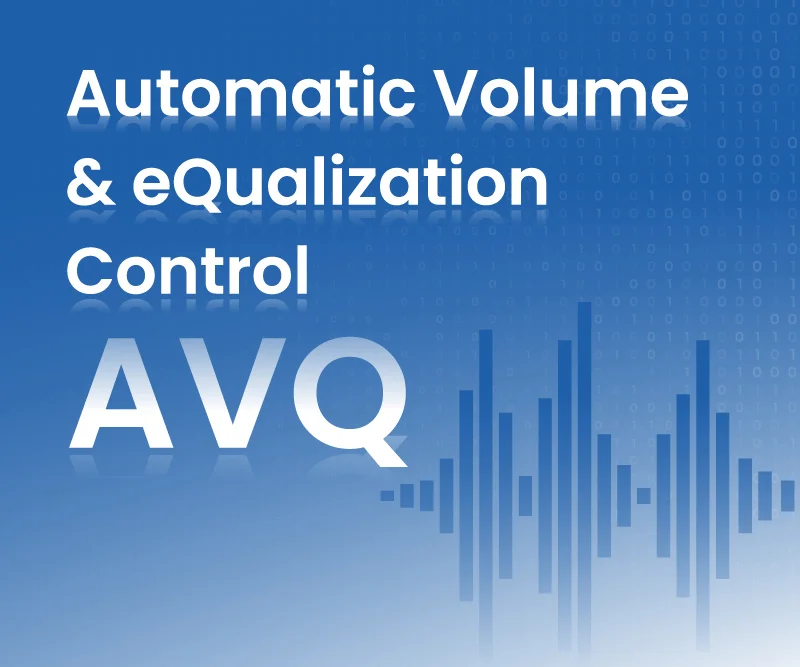|
|
 |
|
Automatic Volume and Equalization Control (AVQ) technology amplifies and equalizes sounds according to ambient noise characteristics in both amplitude and frequency. Alango offers a sister technology called AVQ-Me™, which is for Music and Entertainment. However, AVQ is designed specifically to improve perceptual loudness and intelligibility of received speech. It’s an important distinction since the frequency bandwidth as well as other properties of voice and audio (music) are vastly different. However, both AVQ and AVQ-Me™ are designed for the real world wherein noise level and the frequency spectrum of the noise change dynamically. AVQ significantly improves the user experience in such applications as mobile phones, hands-free car kits, Bluetooth headsets, and other mobile voice applications. Comfortable listening of speech in conditions with varying ambient noises requires constant changes in sound level (with corresponding changes in noise level) and equalization (with corresponding changes in noise spectrum). For example, volume and equalization set for a standing car will not be adequate when the car is moving due to road and engine noises. What’s more, the speech may become unintelligible when air-conditioning is switched on or the windows are opened. Today, the user has to change the volume manually, which at a minimum is annoying, but possibly even distracting and dangerous especially during hands-free voice communication. Suitable manual frequency equalization is almost never possible due to a large number of parameters to be controlled “on the fly”. This situation exists with other applications as well. Mobile phones and Bluetooth headsets are two prominent examples wherein users often need to use volume controls to cope with varying noise conditions. 
A microphone (already present in communication devices) is used to monitor the current noise conditions. The microphone signal is analyzed and the ambient noise parameters are extracted. Acoustic Echo Cancellation technology is used to remove parts of the speaker signals present in the microphone signal due to acoustic coupling between the two. Simultaneously, the current signal parameters are analyzed and fed into the equalization block. This block dynamically amplifies parts of the signal spectrum masked by noise ensuring equal perceptual loudness and consistent voice intelligibility in variable noise conditions. |

|
Use control buttons on the interactive screenshots to play/stop/navigate |
|
Woman and man speech with background sounds, AVQ is off (no processing); volume and equalization are adjusted for quite conditions: |
The same speech signal but processed with AVQ. Note that the background noise represents ambient noise in the device environment and can not be reduced using the device speaker: |
|
Mobile phones, Bluetooth headsets, hands-free kits, video/audio conferencing equipment, voice recorders, intercom systems, voice controlled devices and many others.
Although it can be used standalone, Automatic Volume and Equalization Control is also integrated with other Alango technologies into one Voice Communication Package (VCP). The package also includes acoustic echo cancellation, stationary and transient noise suppression, dynamic range compressor, speech enhancement, (optional) adaptive dual microphone and several other technologies.
110th AES Convention paper (PDF) |